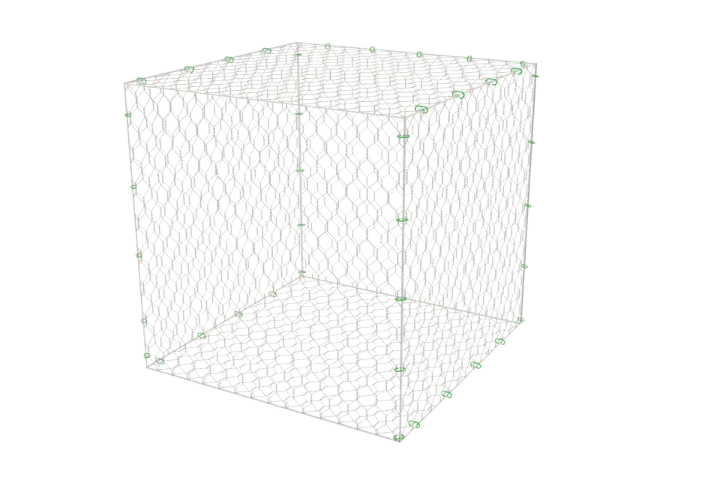Erosion is among the largest environmental and engineering issues throughout the globe and in Saudi Arabia, it is particularly significant. The dry winds of the desert, the flooding season in the wadis and the ever-present power of waves in the coastal areas are all causes of loss of soil and instability of the structure. Such classic construction as concrete walls or stone pitching is not only costly, but also complex in terms of adjusting to the natural environment. Gabion technology provides a long-term solution in this case.
The gabion box and the gabion mattress are some of the most popular ones. They are used for erosive purposes in different applications, both are containerized using wire mesh, filled with stones or other appropriate material. This is important as engineers, contractors, and even homeowners need to know how to benefit and use them due to their durability and environmental friendliness in terms of resistance against erosion.

What Are Gabion Boxes and Mattresses?
A gabion box refers to a cage of galvanized or PVC-covered wire mesh that is shaped like a rectangle. It consists of stones of the right size, which is generally between 100-200mm, and is mostly used to develop vertical structures, which include retaining walls, flood barriers, and slope reinforcements. Since several gabion boxes may be arranged vertically or horizontally, it offers excellent structural integrity while still maintaining natural draining of water.
A gabion mattress, conversely, is a broader and less deep variant of the gabion box. Mattresses are not piled up in height, but lie flat and in large areas of surface such as riverbeds, canals, and coastline. They are normally made with smaller stones that do not exceed 60-120 mm and they are specifically made to defend against scouring and erosion of flowing water.
Key Differences Between Gabion Box and Gabion Mattress
While both serve similar structural purposes, gabion boxes and mattresses differ in shape, function, and application across Saudi Arabia’s terrain and water management projects.
| Feature | Gabion Box | Gabion Mattress |
|---|---|---|
| Shape / Size | Rectangular, deeper | Shallow, wide, and flat |
| Primary Use | Retaining walls, slope stabilization | Riverbeds, coastal defense, channel lining |
| Stone Size | 100–200 mm | 60–120 mm |
| Durability | Very high, long-term | High but surface-focused |
| Flexibility | Rigid and stacked | More adaptable to uneven ground |
| Installation | Vertical placement | Horizontal surface coverage |
Erosion Control uses
Gabion Boxes
- Construction of highways, bridges and housing developments in terms of retaining walls.
- Fixed steeper slopes and embankments in the mountainous regions of Saudi Arabia.
- Preventing landslides and soil collapse infrastructures and roads.
- Serving as flood controls in wadis which distribute massive seasonal water flows.
Gabion Mattresses
- Preserving the riverbeds and canals against eroding.
- Coastal protection against the action of waves particularly in the eastern and western coast of Saudi.
- Coating drainage channels to avoid scouring.
- The foundation to be given under gabion boxes to enhance stability.
Gabion Boxes and Mattresses Advantages
Both gabion boxes and gabion mattresses have a number of advantages that make them suitable to the Saudi conditions:
- Durability: PVC-coated galvanized mesh is very durable to extreme temperature, sand abrasion and coastal salt exposure.
- Eco-Friendly: With time, the vegetation develops between the stones that will integrate the structure into the natural environment and ensure biodiversity.
- Flexibility: Gabions do not lose their stability as a result of movements of soil as compared to rigid concrete.
- Economical: Stones are available locally and therefore it is cheaper to construct rather than importing materials.
- Saving in Maintenance: Once in place, they will be in use over decades with minimum maintenance.
Choosing Between Gabion Box and Gabion Mattress
The decision will be based on the project requirements:
- The Gabion box is superior in vertical structures where there are the requirements of strength and height as in the case of walls and embankments.
- Gabion mattresses are suitable in horizontal use such as in protecting riverbanks, lining canals, and eroding coastlines.
- They are normally applied together in most situations: mattresses create a cushioning base, and boxes are placed on top of them to provide the necessary stability.
Saudi Arabian Long-term performance
Gabion boxes and mattresses can have a lifespan of 50100 years when made properly. In the majority of cases, the wire mesh will wear out earlier than the stones, and as such, the application of PVC-coated galvanized mesh is highly encouraged in the climate of Saudi Arabia. In areas with high corrosion rate because of saltwater, premium coating is an added value. The vegetation cover also increases the strength and resilience of the structure over time.
In Saudi Arabia, Cost Perspective.
Stone depends a great deal on the cost:
- The most economical ones are limestone and sandstone, which are found in the local quarries.
- More costly yet offering greater stability and density that results in longevity, granite and basalt may also be used in occasions of critical infrastructure and protection against the coast.
- Temporary projects or projects with low-budget can be made with recycled rock material or recycled concrete material, which is cheaper to use as well as environmentally friendly.
Conclusion
The gabion box and the gabion mattress are also essential in erosion control in the Saudi Arabian territory. Boxes are used to stabilize and support the vertical strength of retaining walls and flood blockers and mattresses are used to offer a wide surface against scouring and erosion in rivers and coastal regions. The choice of the type or a mixture of two types will help engineers and builders to design the structures that are durable, environment-friendly, and affordable.
Since Saudi Arabia is still developing its infrastructures and modernizing its cities, the use of the gabion systems can be regarded as one of the most effective, environmentally friendly and cost-effective solutions to protecting the land against erosion in the future generations.